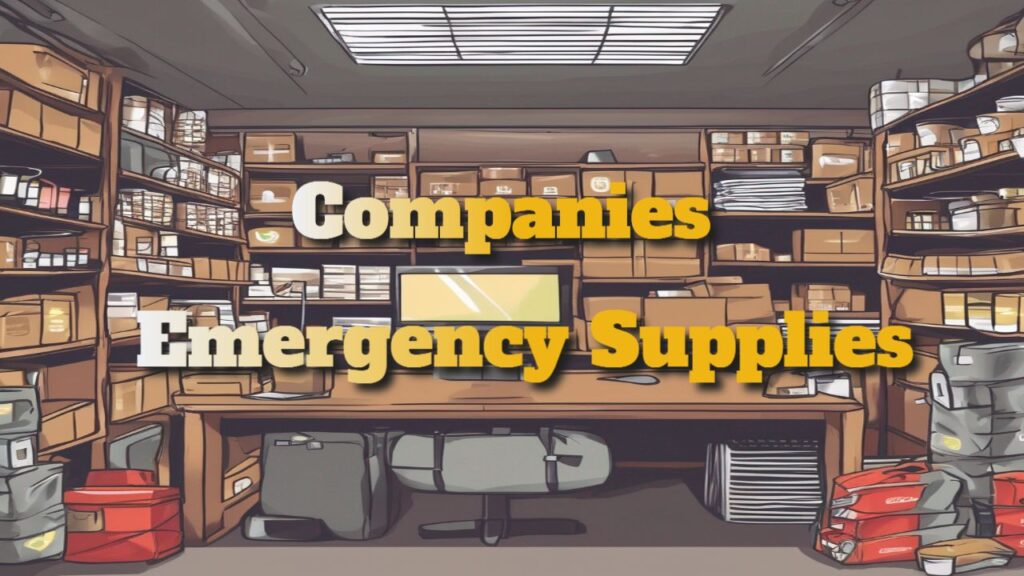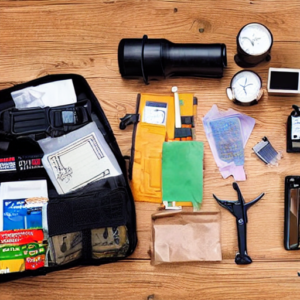Companies Emergency Supplies
Companies Emergency Supplies: A Major emergency is uncommon but can happen anytime. An emergency pack can help you be better prepared for at least two days in an emergency.
Recent events in the United Kingdom and new government guidelines have prompted businesses to reconsider their risk management and crisis response strategies.
A critical component of this is the so-called emergency bag or crisis response pack.
Because every business is distinct, you can create your emergency kit. We've developed a list of suggested emergency pack contents to help you assemble your own.
When people put together their first emergency pack, they know they won't always be able to keep it with them. Then, you start thinking about other ways to defend yourself.
What if the SHTF happens while you're at work and your supplies are all at home? Can you reach your vehicle even if you were willing to relocate it?
All these are why a bug-out in your office or business should be included in your overall preparation strategy. Your pack will vary depending on your workplace, but having emergency supplies will always put you ahead of the competition.
Comfortable Clothing
Many people work in offices or places where let's face it, you're probably wearing clothing that would be unpleasant in a disaster or survival situation.
An extra set of clothes is an essential first step in preparing to leave the office. Don't forget to bring your socks and trousers.
Consider lightweight, compact, and climate-appropriate thermal clothing for various climes and conditions.
Running Shoes or Hiking Boots
A solid pair of walking or hiking shoes is required in many circumstances, especially if you wear fine shoes to work. If you buy new shoes, break them in before packing them.
Water sources can become contaminated during natural disasters like floods, so you must work hard to get clean, safe water. A water bottle is an excellent place to start, but I recommend packing a personal filtration device or a LifeStraw. The LifeStraw appeals to me because it is small, easy to transport, and a lifesaver.
Food in Case of Emergency
I recommend bringing MREs or ready-to-eat meals because you never know what can happen, whether you're without power or stuck in a place where you can't make a fire. You should also bring some refreshments: Protein is abundant in granola bars and almonds.
Hygiene and Medical Aid Kits
If you need medication or must take it regularly, keep at least a 72-hour supply. A first aid kit with the necessities is easy to pack and a helpful resource in the event of an incident. In medical situations, a simple bar of soap and hand sanitiser can also help keep you clean during an outbreak.
Emergency Alarm
Everyone should be equipped with an emergency whistle. If you are in danger from an attacker, this primary defensive mechanism can save your life by alerting everyone around you to the situation. Please attach it to the outside of your backpack or get a portable whistle; make sure it is easily accessible in an emergency.
Unlike Business Contingency Kits, which are intended for an “invasion,” lock-down, or emergency shelter in place, a Business Grab Bag is used in any situation that requires the safe evacuation of your property. It should contain the following equipment and information.
Documentation and information
- Your emergency evacuation strategy
- Your business continuity strategy
- A weatherproof document bag (or laminated papers) containing a list of vital contacts, a personnel list, and other information.
- Floor/location plans (laminated) and an inventory copy kept in a waterproof card bag
- Radio and electricity communications | torch
- Spare batteries and a loudhailer for public address
- Radio: preferably an AM/FM wind-up radio, as well as two-way radios or satellite phones
- Spare smartphone with emergency apps pre-installed + emergency charger
- Glow sticks (industrial-grade safety light sticks), flashing lights, and rechargeable lamps/lanterns are examples of warnings/markers.
- Weatherproof notebook, pens or pencils, permanent markers, adhesive labels, and other writing items
Health and security
Armbands and safety vests that glow in the dark
Spare batteries for all tools and hand and head torches are recommended to keep your hands free.
Personal Protective Equipment (PPE): The importance of respiratory protection, eye protection, hand and body protection, and head protection cannot be overstated.
Security and safety on construction sites
Spare keys and access codes
Examples of construction site safety gear include barrier tape and multitools/survival tools.
Optics
Primary medical care
First aid kits are only held for catastrophic circumstances.
Emergency foil blankets (for both workers and visitors)
First aid “food” (glucose pills or boiling sweets) and rehydration power
Hygiene
Wipes for cleaning hands and surfaces, bath towels, and so on.
Food and water
Water purification and emergency drinking water
‘Food' for emergencies with a high energy content
Packets of rations MRE
Other
Backup phone with apps and a disposable camera
Change USB discs containing crucial information. Store all products in a durable bag or case.
The above list is only a recommendation. Every firm is different, so the contents of your business grab bag should reflect your needs for emergency preparedness and business continuity.
The post Companies Emergency Supplies appeared first on https://gqcentral.co.uk




